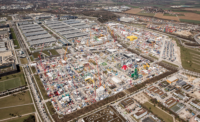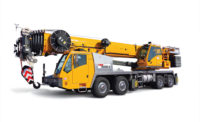While its acquisition of SDLG has granted Volvo Construction Equipment a crucial foothold in China and emerging markets around the world, Volvo is still looking to grow its global brand.
"The key here is to understand the dynamics in each and every market ... you need to find a way of meeting the local customers' needs," says Tommy Streipel, head of Volvo CE's wheel-loader product line. "We've seen studies that divide world construction- equipment customers into groups [such as] feature lovers, service seekers, deal seekers and economists. We've stolen that idea with pride. Well, we took it and Volvo-ized it a bit."
Rather than build machines from the ground up for various global markets, Volvo is looking to release regionally targeted versions of its popular machines so it can preserve its manufacturing culture abroad. One example is the L105 wheel loader, introduced in China in January 2013 under the Volvo brand. At first glance, it looks like the L110 wheel loader available in Europe, but various components have been altered for the Chinese market. First to go was Volvo's torque-parallel (TP) linkage, which is designed for multiple applications but adds a price premium. The L105 "has a Z-bar linkage and a cab that has been 'defeatured'—very different from the cab you would find in Scandinavia," says Streipel. "We develop it in the normal Volvo standards of quality and process [but] package it differently."
Another example is the adoption of Tier 4 emissions standards by only a few developed nations. "If we need to fulfill Tier 4 regulation, that's easy from the Swedish side, but what of a country [such as] South Africa, where it's non-regulated? You can put in any dirty old engine you like." Volvo's policy is that all engines sold globally will meet at least Tier 2 emissions standards, regardless of whether regulations are present in a particular country.
Building from a standard system means less pressure on supply chains, as well. According to Ivan Obrovac, general manger of Volvo's factory in Eskilstuna, Sweden, the approach of the company's unified manufacturing means driveline components and axles manufactured there can be shipped to equivalent Volvo facilities in Shippensburg, Pa., Pederneiras, Brazil, and Linyi, China. All they need to do is tweak their choices to suit the market.
Streipel sees this built-from-a-kit approach as vital to Volvo's widespread manufacturing base. "If you have a true modularized product platform, then you can basically assemble it wherever you want. You can shorten all the lead times—from suppliers, shipping from the plant and shipping machines—to the end customer."





Post a comment to this article
Report Abusive Comment